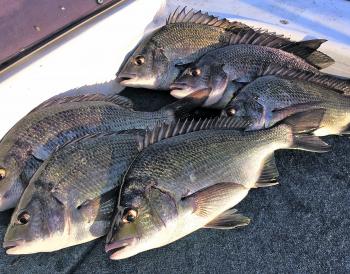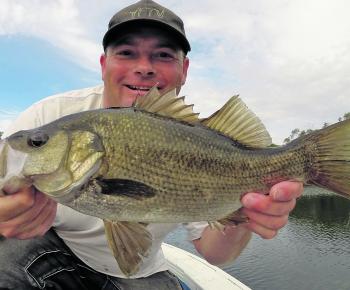July heralds some very cold early morning starts on the Glenelg, but for those prepared to brave the elements the rewards are there to be claimed.
The preceding months saw the expected behavioral patterns of bream, estuary perch and mulloway all hold true with bream schooling up wide of the banks in the deeper water. This is a recruitment phase in preparation for spawning. The perch have begun to school up in large numbers but are holding tight to snags. As we see more inflow into the river the perch will begin their migration to the lower sections of the river, again seeking the right levels of salinity to begin their spawning. Mulloway are spread right through the entire system with the biggest congregations through the mid section of the river and around the Caves landing up to above Sapling Creek.
If conditions are right through July expect to see an open river mouth. This will very much depend on rain creating enough inflow to keep the mouth open. Periods of high ocean swell can push large amounts of sand up onto the beach at the mouth, which can keep the mouth closed at times even with very high water levels in the river – this was indeed the case through late May and into June. With an open mouth the river becomes much more tidally influenced even up in the higher reaches, which can make for some terrific fishing in the estuary itself. Focus your fishing around the biggest tides when the salt-water wedge pushes in under the dirtier fresh water for exceptional bream fishing.
I rely on my sounder to find those schools of fish sitting in around 2-4m and concentrate on the mid to lower sections of the river. At times bream, perch and mulloway can be found schooled up in large numbers on the sounder but can be a little finicky. Other times when the schools are hard to find it can be a matter of trying different areas to find where the fish may be feeding. A simple search pattern is a great way to dial in on the best structure to target. Fishing rock walls with a deeper drop-off, weed banks and then mud flats both deep and shallow can give a clear indication on where best to target your efforts. Deep diving hardbody lures and soft plastics allowed to get right down on the bottom and fished very slowly will draw the interest of most fish, with darker colours and larger profiles performing the best. Baits like pilchard fillet, cut crab and podworm are also dynamite in turbid water that has a bit of flow.
Winter often provides some of the best fishing on the Glenelg, so don’t let the cold weather put you off.
Reads: 873
Bream can be finicky, but persistence will pay off.

Perch are moving downriver in July.

Use your sounder to find schools in the deeper water.




